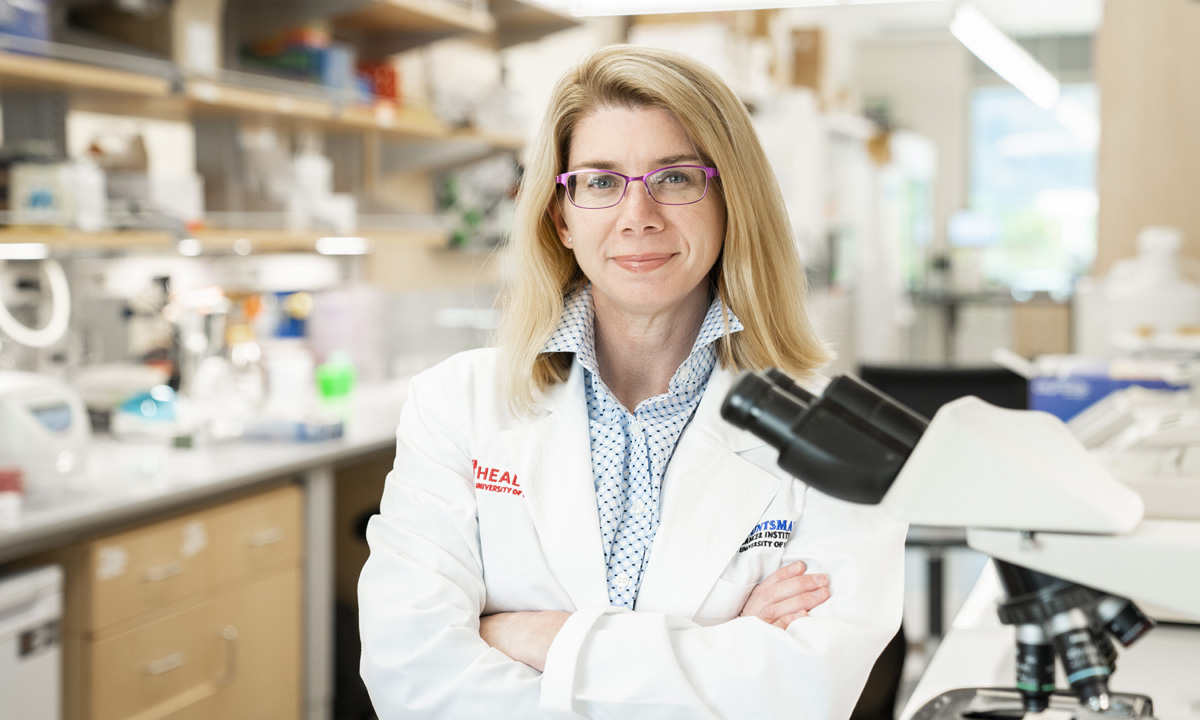
Dr. Grossmann specializes in sarcoma pathology and molecular oncology; her research focuses on the mechanisms of tumorgenesis, metastasis, and the development of targeted therapies for cancer treatment.
In a study recently published by Cancer Research, Allie Grossmann, MD, PhD, details one factor behind how and why melanoma metastasizes so quickly while identifying better ways to treat this lethal skin cancer. Grossmann is an ARUP medical director for the Anatomic Pathology and Molecular Oncology labs.
“Melanoma arises from the pigmentation cells of the skin. Those cells, called melanocytes, produce brown pigment to help protect our skin from sun damage. But melanocytes can transform into melanoma cells,” explained Grossmann, who is also an assistant professor of pathology at the University of Utah (U of U) and a researcher for Huntsman Cancer Institute (HCI).
Melanocytes have an inherent capacity to migrate all over the body, and they retain that ability following malignant transformation. Because of this, melanoma is able to spread to distant sites in the body earlier than most cancer cells. Early metastasis from primary tumors is a long-standing clinical conundrum in melanoma.
The most common form of melanoma is associated with changes in a cancer-causing gene known as BRAF which can signal the tumor to grow and spread to other areas of the body. While researching what drives melanoma cells to spread, Grossman found that a protein called ARF6 contributes to early metastatic processes in melanoma.
“In general, we know that with melanoma and other cancers, the larger the primary tumor, the higher the chances of developing distant metastasis. However, activated ARF6 can promote metastasis independently of tumor size,” explained Grossmann. The study also found that ARF6 facilitates the ability of tumor cells circulating in the bloodstream to invade and grow in distant organs.
“I think the takeaway from this study is that ARF activation is crucial for early melanoma spreading, regardless of tumor size,” Grossmann said. She added that drugs targeting ARF6 are in preclinical development, making these agents potential options for future therapeutic use.
Study collaborators included the Holmen Lab, led by Sheri L. Holmen, PhD, HCI researcher and professor of surgery at the U of U, and the Odelberg Lab, led by Shannon Odelberg, PhD, HCI researcher and assistant professor of internal medicine at the U of U.
The following organizations support the research: National Cancer Institute, National Institutes of Health, Melanoma Research Alliance, Harold J. Lloyd Charitable Trust, and the Huntsman Cancer Foundation.
Contributors: Huntsman Cancer Institute; Peta Owens-Liston, Sr. Science Communications Writer, ARUP Laboratories
Photo credit: Jonathan Marti
Related blog:
Breakthrough Technology Spurs New Test for Non-Small Cell Lung Cancer Patients
















